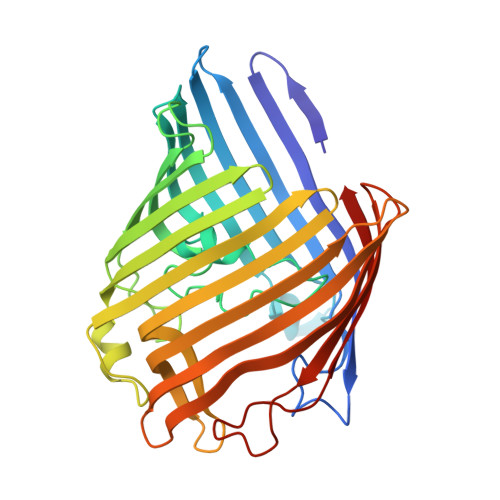Stubborn contaminants: influence of detergents on the purity of the multidrug ABC transporter BmrA
Wiseman, B., Kilburg, A., Chaptal, V., Reyes-Mejia, G.C., Sarwan, J., Falson, P., Jault, J.M.(2014) PLoS One 9: e114864-e114864
- PubMed: 25517996
- DOI: https://doi.org/10.1371/journal.pone.0114864
- Primary Citation of Related Structures:
4JFB - PubMed Abstract:
Despite the growing interest in membrane proteins, their crystallization remains a major challenge. In the course of a crystallographic study on the multidrug ATP-binding cassette transporter BmrA, mass spectral analyses on samples purified with six selected detergents revealed unexpected protein contamination visible for the most part on overloaded SDS-PAGE. A major contamination from the outer membrane protein OmpF was detected in purifications with Foscholine 12 (FC12) but not with Lauryldimethylamine-N-oxide (LDAO) or any of the maltose-based detergents. Consequently, in the FC12 purified BmrA, OmpF easily crystallized over BmrA in a new space group, and whose structure is reported here. We therefore devised an optimized protocol to eliminate OmpF during the FC12 purification of BmrA. On the other hand, an additional band visible at ∼110 kDa was detected in all samples purified with the maltose-based detergents. It contained AcrB that crystallized over BmrA despite its trace amounts. Highly pure BmrA preparations could be obtained using either a ΔacrAB E. coli strain and n-dodecyl-β-D-maltopyranoside, or a classical E. coli strain and lauryl maltose neopentyl glycol for the overexpression and purification, respectively. Overall our results urge to incorporate a proteomics-based purity analysis into quality control checks prior to commencing crystallization assays of membrane proteins that are notoriously arduous to crystallize. Moreover, the strategies developed here to selectively eliminate obstinate contaminants should be applicable to the purification of other membrane proteins overexpressed in E. coli.
Organizational Affiliation:
Université Grenoble Alpes, Institut de Biologie Structurale (IBS), 6 rue Jules Horowitz, F-38000, Grenoble, France; CEA, DSV, IBS, F-38000, Grenoble, France; CNRS UMR5075, IBS, F-38000, Grenoble, France.














